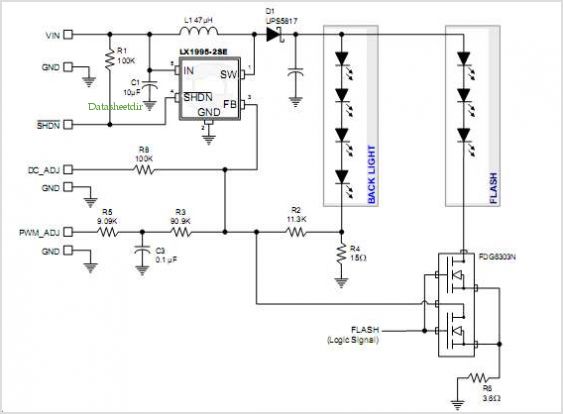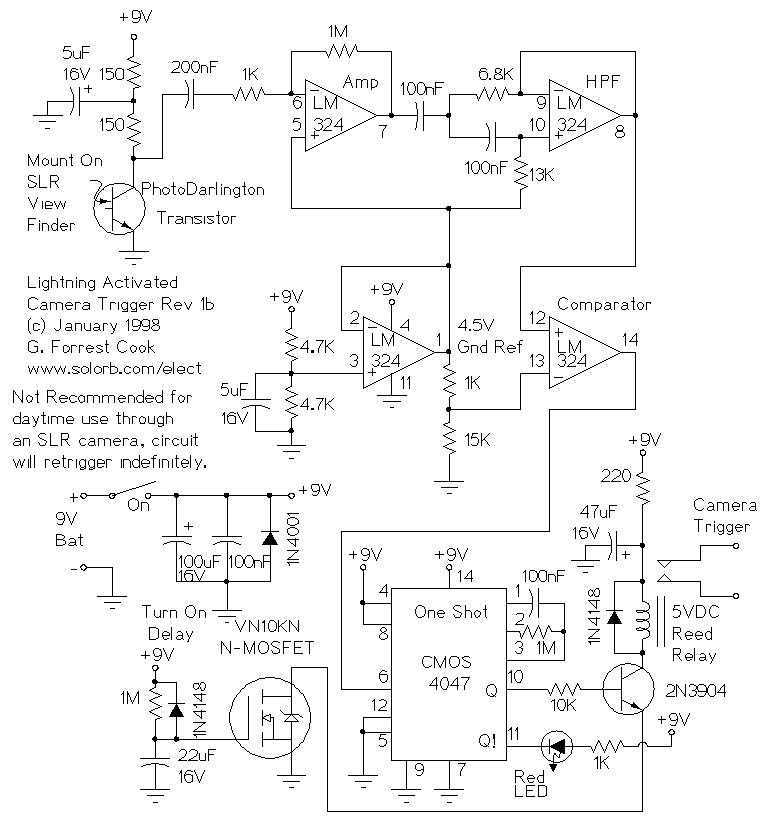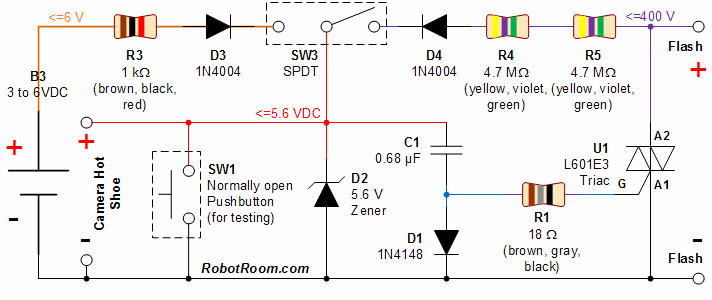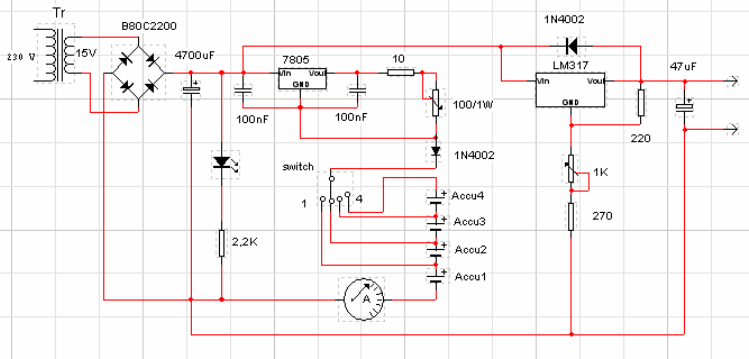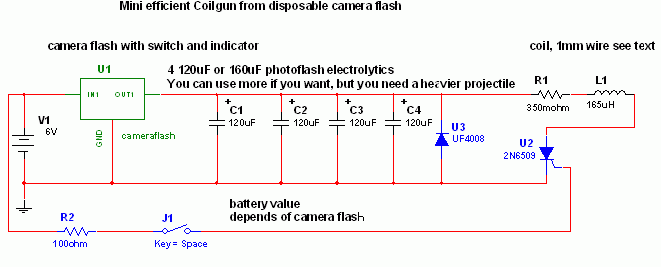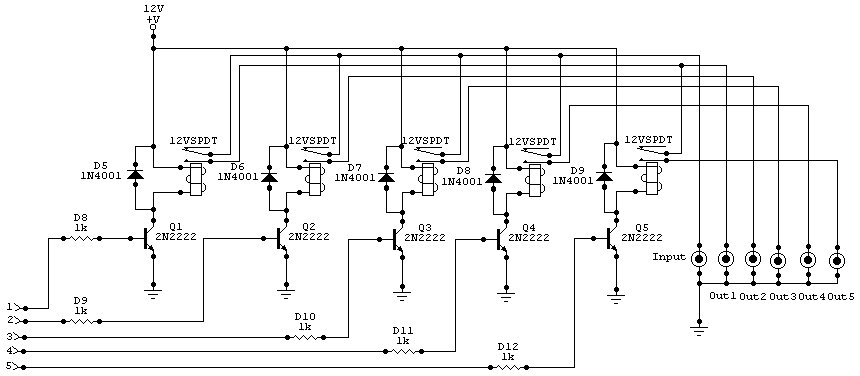
Homebrew tapeless camera
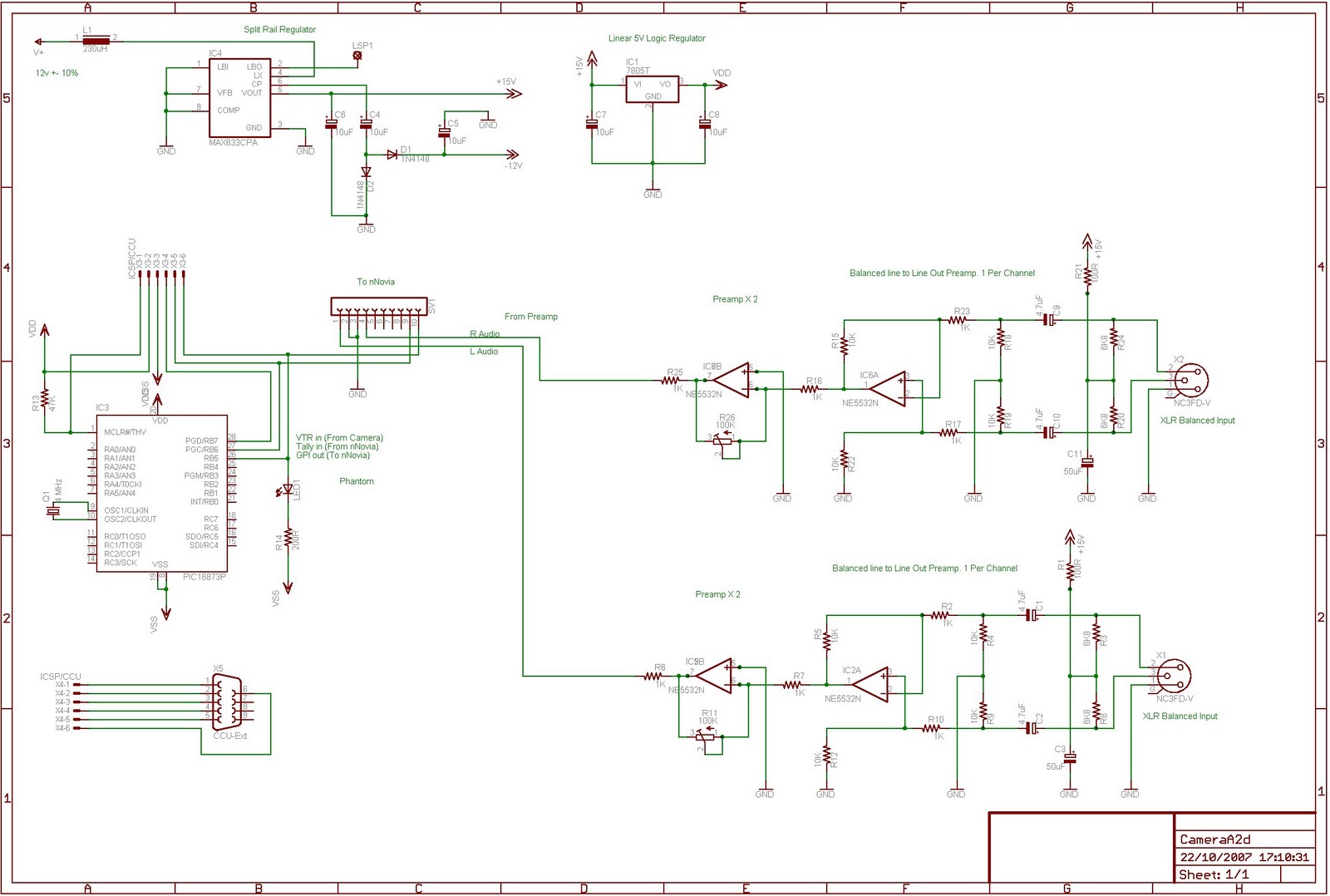
This is an ongoing project focused on creating a circuit to interface the nNovia QC120 A2D2 recorder with a Sony DXC-325P camera equipped with a CA-325P studio back. The final design is still in progress. A circuit based on the PIC 16F872 has been constructed to control the nNovia using the GPI control lines, which appears to function effectively. Prototyping of the preamplifier is planned soon. The design includes utilizing the A2D interfaces on the PIC to operate an LED PPM or VU meter located on the front panel of the case.
The project involves the integration of the nNovia QC120 A2D2 recorder with the Sony DXC-325P camera, which requires a custom circuit to facilitate communication between the two devices. The core of the system is built around the PIC16F872 microcontroller, which is well-suited for handling various input and output operations. The GPI (General Purpose Interface) control lines are utilized to manage the interaction with the nNovia recorder, ensuring that commands are sent and responses are received effectively.
The circuit design incorporates a preamplifier stage, which is essential for enhancing the audio signals before they are processed by the A2D converter. This preamp will be prototyped shortly, allowing for adjustments to be made based on performance metrics. The choice of components for the preamplifier will be critical to maintaining signal integrity and minimizing noise.
Furthermore, the design intends to leverage the A2D interfaces of the PIC microcontroller to drive an LED PPM (Peak Program Meter) or VU (Volume Unit) meter. This visual feedback mechanism will be integrated into the front panel of the enclosure, providing users with real-time information about the audio levels being processed. The implementation of this feature not only enhances usability but also aids in monitoring performance during operation.
Overall, the project aims to create a reliable and user-friendly interface between the nNovia QC120 A2D2 recorder and the Sony DXC-325P camera, with careful consideration given to the audio signal processing stages and user interface components. As the design evolves, further refinements and testing will ensure that the final product meets the required specifications and performance standards.This is an ongoing project I`m working on which started as a circuit that I decided was necessary to be able to neatly interface the nNovia QC120 A2D2recorder to a Sony DXC-325P camera with CA-325P studio back. I`m still working on the final design. I have built the PIC 16f872 based circuit that controlls the nNovia via the GPI control lines and t his seems to work very well. I will be prototyping the Preamp shortly. I have a plan to use the A2Dinterfaces on the PIC to drive an LED PPM or VU meter on the front panel of the case. 🔗 External reference
The project involves the integration of the nNovia QC120 A2D2 recorder with the Sony DXC-325P camera, which requires a custom circuit to facilitate communication between the two devices. The core of the system is built around the PIC16F872 microcontroller, which is well-suited for handling various input and output operations. The GPI (General Purpose Interface) control lines are utilized to manage the interaction with the nNovia recorder, ensuring that commands are sent and responses are received effectively.
The circuit design incorporates a preamplifier stage, which is essential for enhancing the audio signals before they are processed by the A2D converter. This preamp will be prototyped shortly, allowing for adjustments to be made based on performance metrics. The choice of components for the preamplifier will be critical to maintaining signal integrity and minimizing noise.
Furthermore, the design intends to leverage the A2D interfaces of the PIC microcontroller to drive an LED PPM (Peak Program Meter) or VU (Volume Unit) meter. This visual feedback mechanism will be integrated into the front panel of the enclosure, providing users with real-time information about the audio levels being processed. The implementation of this feature not only enhances usability but also aids in monitoring performance during operation.
Overall, the project aims to create a reliable and user-friendly interface between the nNovia QC120 A2D2 recorder and the Sony DXC-325P camera, with careful consideration given to the audio signal processing stages and user interface components. As the design evolves, further refinements and testing will ensure that the final product meets the required specifications and performance standards.This is an ongoing project I`m working on which started as a circuit that I decided was necessary to be able to neatly interface the nNovia QC120 A2D2recorder to a Sony DXC-325P camera with CA-325P studio back. I`m still working on the final design. I have built the PIC 16f872 based circuit that controlls the nNovia via the GPI control lines and t his seems to work very well. I will be prototyping the Preamp shortly. I have a plan to use the A2Dinterfaces on the PIC to drive an LED PPM or VU meter on the front panel of the case. 🔗 External reference
